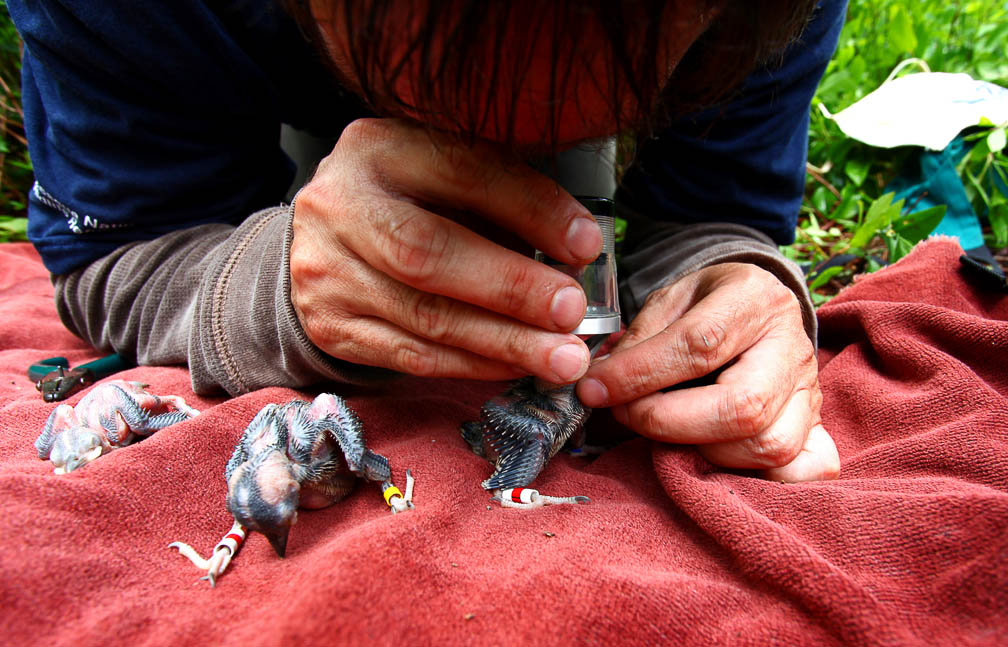2009 Red-cockaded Woodpecker record breeding season
Impacts of sea level rise on marsh birds
May 1, 2009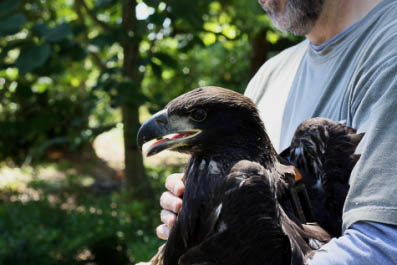
Tracking Azalea
May 3, 2009
Written by Michael Wilson & Bryan Watts
May 2, 2009
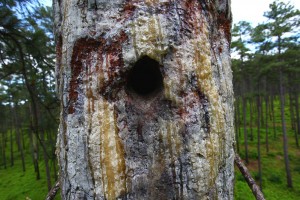
Entrance to red-cockaded woodpecker nest cavity in loblolly pine tree –
The woodpeckers maintain open resin wells in the sapwood to keep the sap flowing around cavities. Photo by Bryan Watts.
Red-cockaded woodpeckers in Virginia had a very successful year in 2009 with 6 breeding pairs successfully fledging 15 birds. The 9 females and 6 males hatched and fledged in 2009 represent the greatest production of young since recovery efforts were initiated a decade ago. The 2009 season also marks only the second time since the late 1980s that six breeding pairs have bred successfully; in 2006, 6 pairs produced 9 chicks.
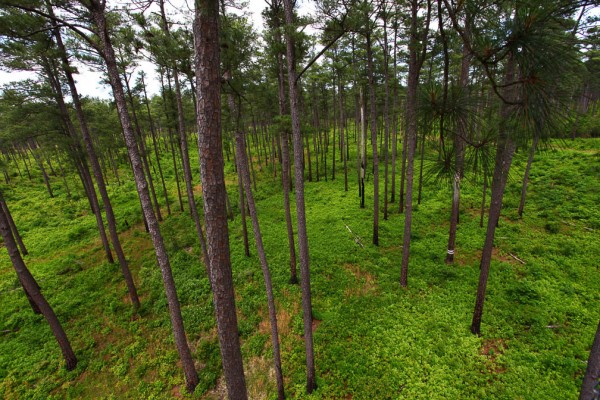
A view from a woodpecker nest-cavity of the pine savannah habitat maintained by TNC on the Piney Grove Preserve. Photo by Bryan Watts.
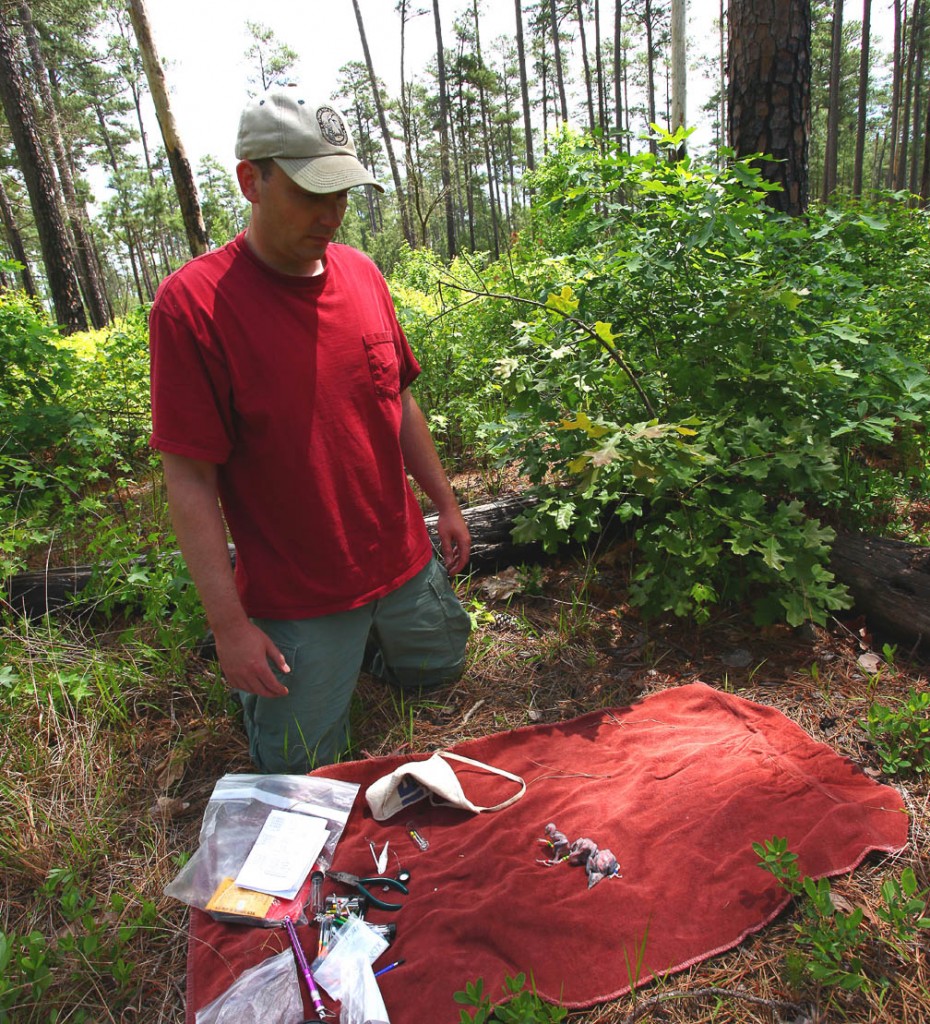
Michael Wilson, the Center for Conservation Biology Biologist, kneels with a brood of woodpeckers after banding in cluster 1. Photo by Bryan Watts.
The Nature Conservancy’s (TNC) Piney Grove Preserve is the only location in Virginia where red-cockaded woodpeckers are known to breed. TNC purchased this land in 2000 to protect, what was at the time, the last 2 remaining breeding clusters in the state and to manage the site to increase the population. The purchase was a turning point for the population that led to the formation of a partnership focused on recovering the species, that includes The Nature Conservancy, The Center for Conservation Biology (CCB), the Virginia Department of Game and Inland Fisheries, and the U.S. Fish and Wildlife Service. Ten years of intensive habitat management by TNC and population management by CCB is paying off in terms of population growth. At the close of the 2009 breeding season, the total number of individuals at the Piney Grove Preserve was 43.
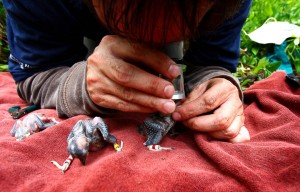
Bryan Watts uses a loop to inspect the crown of chicks after banding. Photo by Bobby Clontz.
A translocation program established in the early phase of management is continuing to produce positive results. Between 2001 and 2005, 25 red-cockaded woodpeckers were translocated from the Carolinas to bolster the Virginia population. Translocated birds set up new breeding territories and paired with native Virginia birds, increasing both the number of breeding sites and the overall productivity. Since 2001, 6 of 25 translocated birds became breeders at Piney Grove. By 2008, only 5 of these translocated birds were still remaining in the population but 4 of them were breeders. In 2009, only 3 translocated birds remained but all were breeding. Now many of the translocated birds’ progeny are breeding and the Piney Grove population is becoming more self-sustaining.
Funding for population management at Piney Grove has been provided by the Virginia chapter of The Nature Conservancy (TNC), The Center for Conservation Biology (CCB), and the Virginia Dept. of Game and Inland Fisheries (VDGIF).

